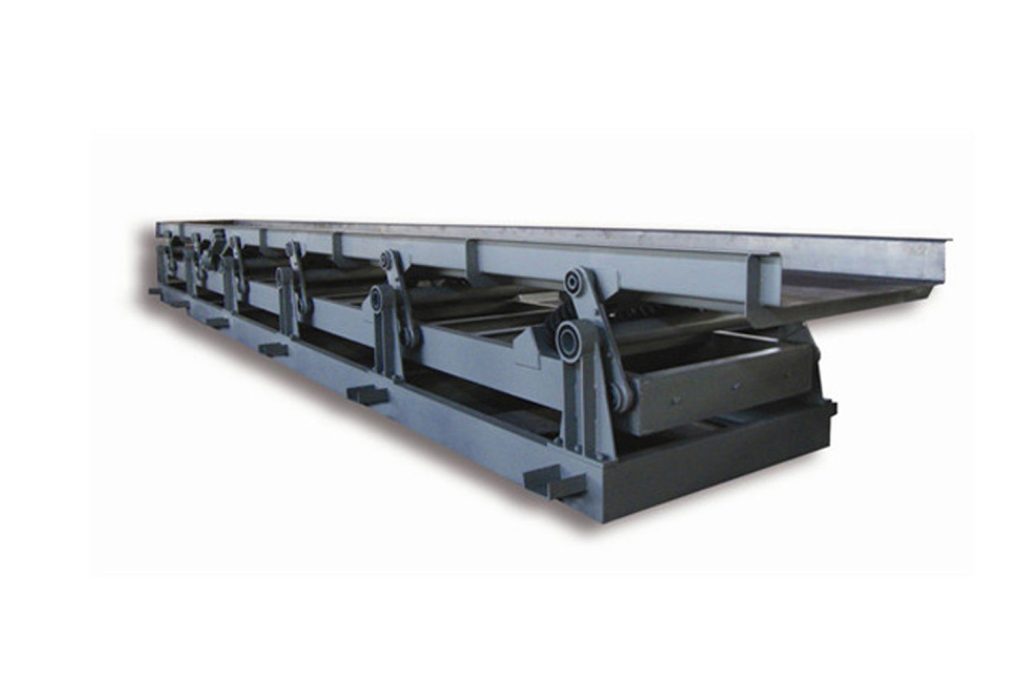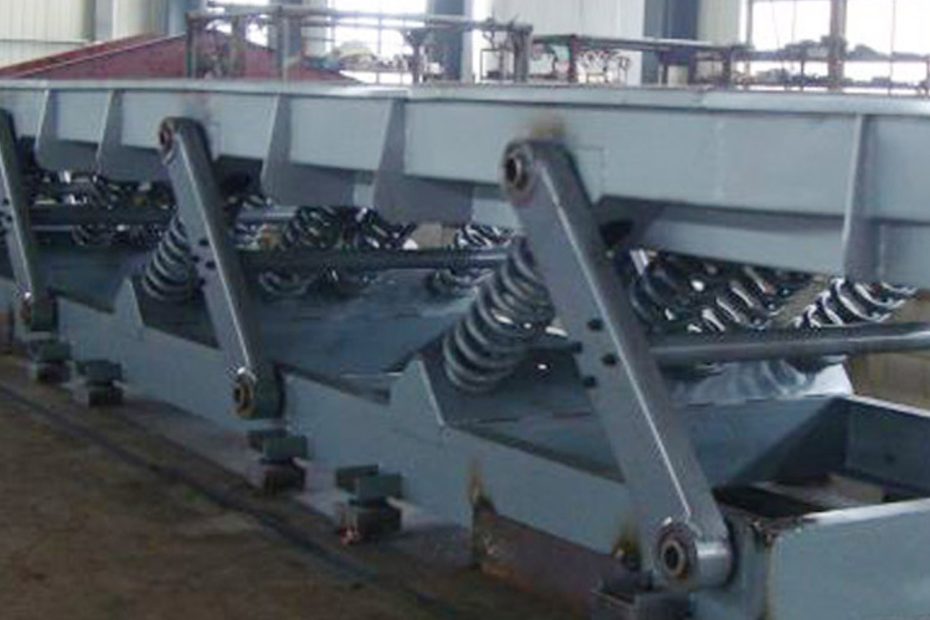A vibrating conveyor is a device that transports materials from one location to another. It uses vibration as the main driving force to push materials through pipes or solid surfaces to achieve the purpose of transportation.
The vibrating conveyor is a conveyor system that generates vibrations through the friction between the material and the vibrator, and transports the material along the conveyor line.
Vibrating conveyors are generally used to convey granules, powders, granular materials, bulk materials, etc. to different locations. Vibrating conveyor equipment has the advantages of high transmission efficiency, small footprint, stable operation, and low maintenance cost.
Introduce the 7 major structures of the vibrating conveyor
Vibrating conveyor is a kind of equipment that realizes material transportation based on the principle of vibration force and mass inertia. Its main components include conveying trough, vibrator, main vibration spring, guide rod, vibration isolation spring, balance chassis, feeding device and unloading device, etc. Below we will describe each of its components one by one.
structure1#:conveyor chute
The conveying chute is the main part of the vibrating conveyor, which is responsible for conveying materials. It is generally composed of U-shaped tank body, side plate, middle support, anti-material plate and other parts. The material enters the feeding trough through the feeding port, and under the action of inertial force and elastic force, the material reciprocates horizontally and vertically in the trough, and finally completes the material transmission task.
structure2#:Shaker
The vibrator is the power source of the vibrating conveyor and the core component of the vibration of the conveying equipment. It generates a certain inertial force by adjusting the speed and vibration force of the vibrating motor, so that the material starts to vibrate, and through the inertial vibration Realize the transmission function. The vibrator is generally composed of a motor, a centrifugal shaft or an eccentric block.
structure3#:main vibration spring
The main vibrating spring is an elastic element connecting the conveying trough and the vibrator, which mainly plays the role of fixing the conveying trough, alleviating vibration impact, reducing noise and suppressing resonance. During the installation process, it is necessary to make appropriate adjustments according to the nature of the conveyed material and the working method to ensure the conveying performance and system stability.
structure4#:guide rod
As the guiding and supporting elements of the vibrating conveyor, the guide rod plays a role in maintaining the stability and reliability of the feeding chute. During the working process, the guide rod can affect the trajectory and output of the material by adjusting the length and quantity, so that it can better adapt to the conveying needs of different materials.

structure5#:Vibration isolation spring
Isolation springs are damping, vibration-isolating elements used in devices. By reducing the vibration of the body, it prevents the vibration from being transmitted to other equipment and the environment, and it also plays an important role in improving the overall safety and stability of the device.
structure6#:balance chassis
As the bottom supporting part of the whole device, the balance chassis plays a role in supporting the stability and balance of the whole device. Adjust the working state of the whole device by balancing the chassis, and maintain stable transmission performance and transmission efficiency during operation.
structure7#:Feeding device and unloading device
The feeding device and the discharging device are two very important components of the vibrating conveyor. The feeding device is used to transport the material into the conveying trough, generally including bucket feeding device, wall-mounted feeding device, screw feeding device, etc.; the unloading device is used to transfer the completed material from the equipment Unloading in the middle generally includes manual dumping, automatic dumping, rotary unloading and other unloading methods.
In conclusion
The vibrating conveyor is an efficient and stable material conveying equipment. Its various structural components perform their own duties and coordinate with each other to achieve efficient, stable and reliable material conveying.
In the actual use process, it is necessary to maintain and maintain its various components to ensure efficient and stable operation of the equipment, extend the service life of the device, improve operating efficiency, and ensure safe production.
